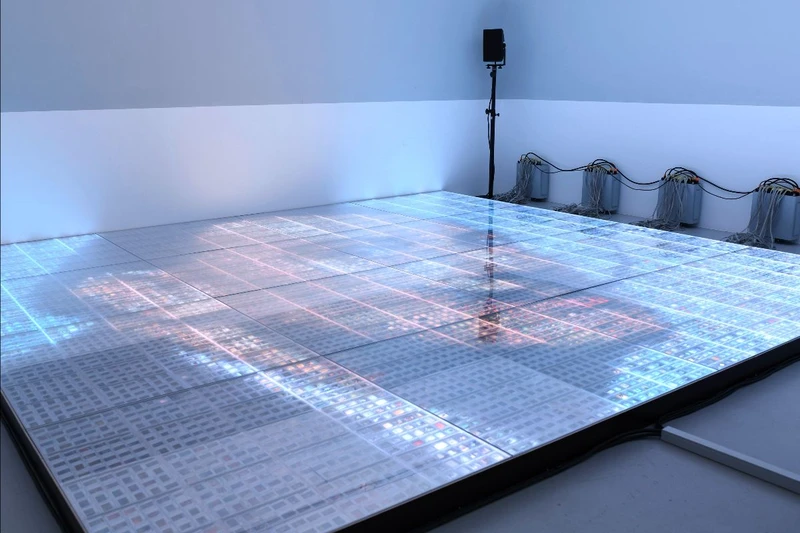Philipp Goldbach, Verso
28 Sep-4 Nov 2023
PV 28 Sep 2023, 6-8pm


A new exhibition of work by German contemporary artist, Philipp Goldbach, whose work explores the relationship between time, written language and technical image, using photography as both material and metaphor.
Central to the exhibition is Dance Floor, 2021, a walk-on disco-style dance floor incorporating 7,680 art history slides illuminated from below with LEDs that blink in sync with music. An accompanying playlist, from the 1970s to now, features songs referring to visual art in their lyrics. On the opening night there will be a performance on the dance floor. Drawing on his previous works such as Sturm/Iconoclasm, 2013, in which the slide archive of Cologne University's Institute of Art History is strewn about the floor or stacked against the wall, Goldbach uses defunct technology to explores changing habits and attitudes towards record-keeping and the distribution of information in a technologically-advancing world.
Also on show is a new photographic project for which Goldbach visited major works by Italian artist Lucio Fontana in museums such as Museum Folkwang, Essen and the Centre Pompidou, Paris. In agreement with the Fondazione Lucio Fontana in Milan, and with the museums’ permission and the help of conservators, Goldbach set up a mobile darkroom in the museums and recorded Fontana’s original works from the 1950s and 1960s through the medium of the photogram (a camera-less image made by placing an object directly on to the surface of a light-sensitive material and then exposing it to light). The results are new renderings that offer a different view of these iconic ‘slash’ canvases.
Other works include a colour photogram of a neon piece by Ferdinand Kriwet and ‘Progression’ light sculptures incorporating illuminated advertisements from the photo manufacturers AGFA and Kodak, installed horizontally to correspond with Donald Judd's Stacks and Progressions sculptures.
The exhibition can be seen as a study of photography, showing another side of the medium, the reverse side or “verso”. At a time of hyper-digitisation and reproducibility, Goldbach creates an homage to photography and examines the impact it has had on art and the role it plays today.